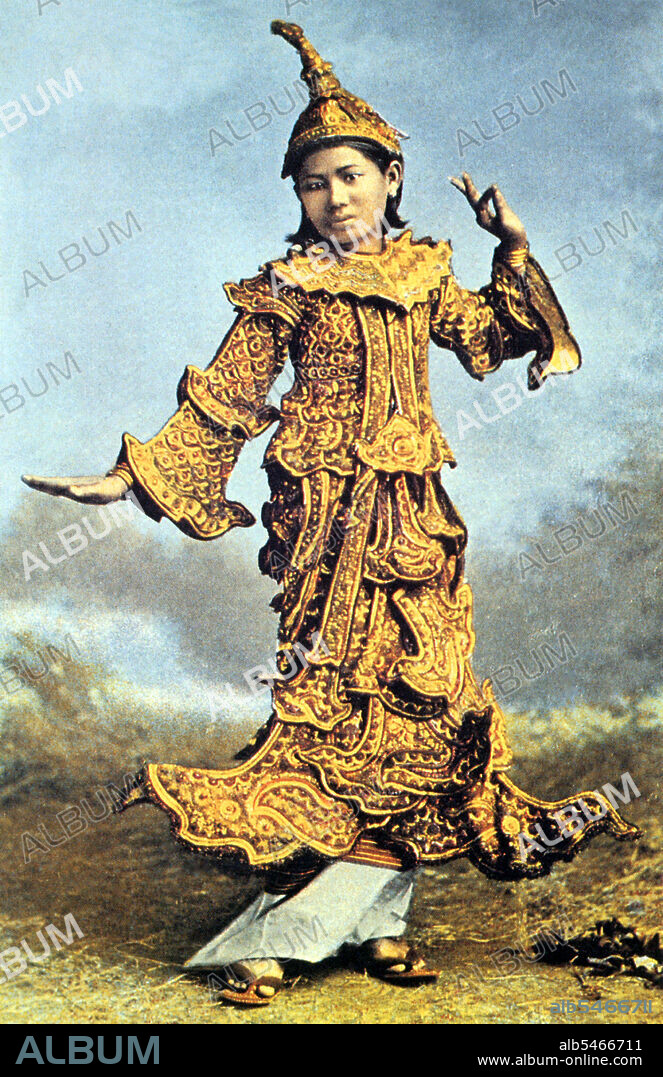alb5466711
Burma / Myanmar: 19th century picture of late Konbaung Dynasty royal dress: 'The dance of the pin-taing-san (Crown Princess), c. 1885. The style is that of the court of King Thibaw (1878-1885).

|
Añadir a otro lightbox |
|
Añadir a otro lightbox |



¿Ya tienes cuenta? Iniciar sesión
¿No tienes cuenta? Regístrate
Compra esta imagen.
Selecciona el uso:

Título:
Burma / Myanmar: 19th century picture of late Konbaung Dynasty royal dress: 'The dance of the pin-taing-san (Crown Princess), c. 1885. The style is that of the court of King Thibaw (1878-1885).
Descripción:
Ver traducción automática
The origins of Burmese Dance are traced to the Pyu, Halin, and Mon cultures in the central and lower Irrawaddy regions from at least two centuries before the Christian era. Archaeological evidence shows Indian influences in this. There were also influences from Thai and Khmer cultures during the many invasions and counter-invasions that occurred over the next two millennia.There was a particularly well documented infusion of dance forms, such as the Yama Zatdaw (the Burmese version of the Ramayana) in 1767, when the Burmese sacked Ayutthaya and expropriated a large component of the Thai court. Nonetheless, some of the surviving forms (including the belu, nat gadaw and zawgyi dances) honour folklore characters that are quintessentially Burmese, some of these from pre-Buddhist times. There is also a close relationship between the classical Burmese marionette and human dance art forms, with the former obviously imitating human dance, but also with human dance imitating the movements of the marionette.
Crédito:
Album / Pictures From History/Universal Images Group
Autorizaciones:
Tamaño imagen:
3400 x 5252 px | 51.1 MB
Tamaño impresión:
28.8 x 44.5 cm | 11.3 x 17.5 in (300 dpi)
 Pinterest
Pinterest Twitter
Twitter Facebook
Facebook Copiar enlace
Copiar enlace Email
Email
